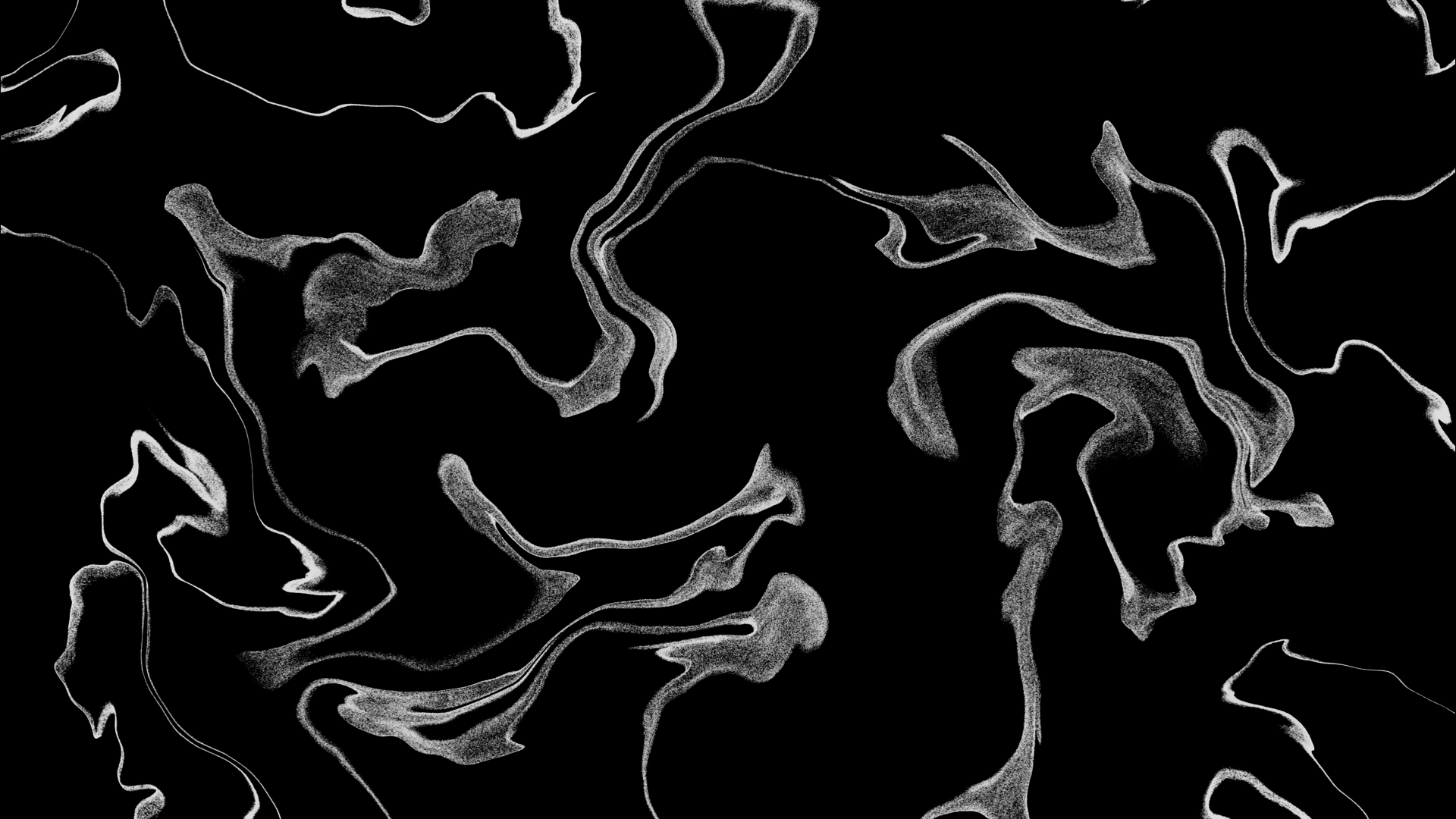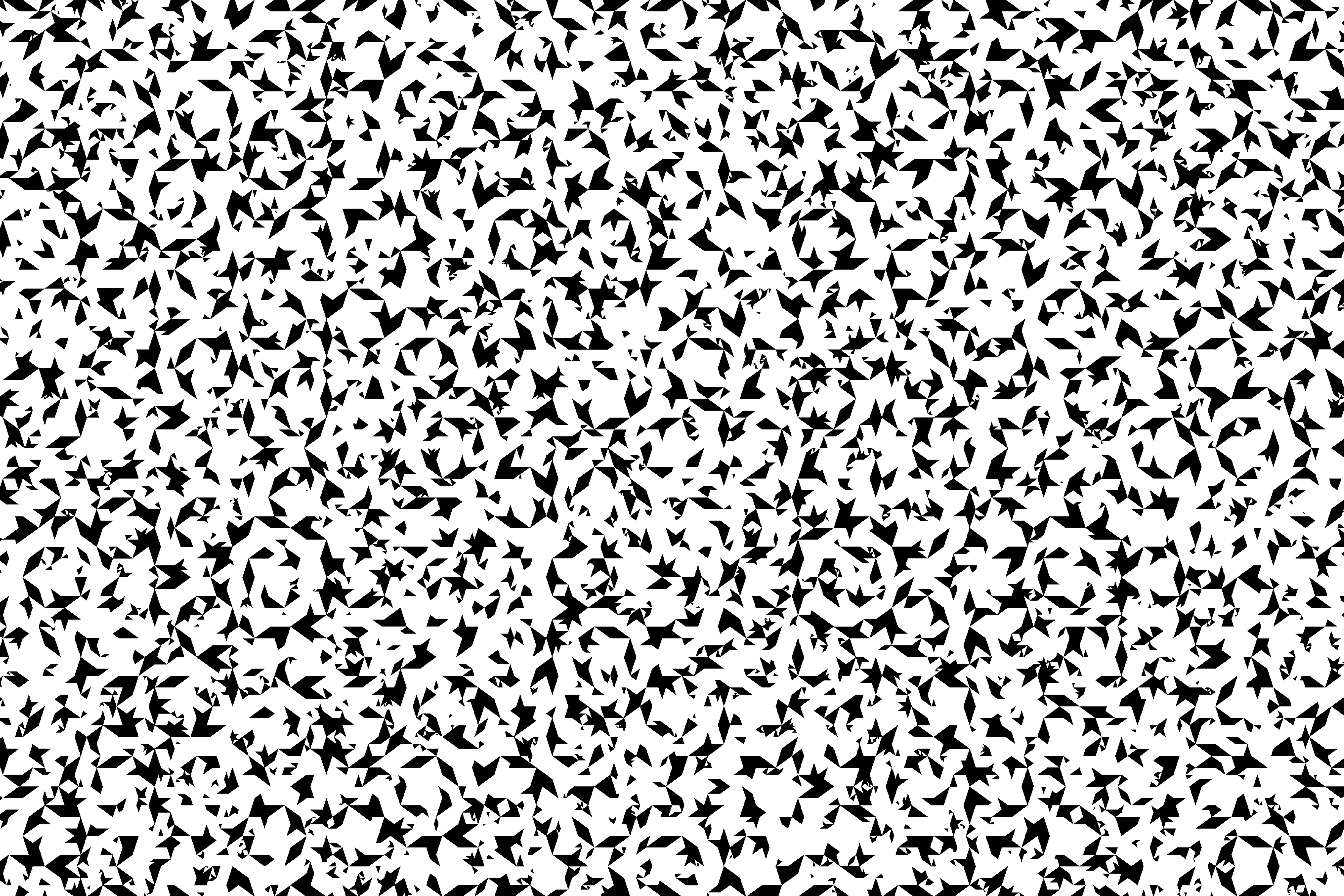The Penrose tiling is an iconic geometric form, with not only an intriguing visual elegance but also a fascinating conceptual underpinning.
From just two simple quadrilateral tiles we are able to endlessly tile a 2-dimensional plane without the pattern ever repeating. Penrose tiles are built upon a captivating aperiodic structure, seamlessly blending perfect order with endless irregularity.
Concept & History
The Penrose tiling gets its name from its creator, Roger Penrose. Penrose discovered the tiling structure during the 1970s, working through various iterations, clarifying, and simplifying the concept down along the way.
Penrose initially worked by subdividing a regular pentagon into 6 smaller ones, with 5 triangular gaps. From here he set about configuring tiling patterns to ‘solve the jigsaw puzzle’ and recombine this basic shape into tile configuration.
Initially, he created the ‘P1’ tile set composed of 4 tiles of different shapes (shown below). Whilst it can tile the plane, much like the later versions, the tiles required to do so are much more complicated and lack the mathematical elegance that is so often strived for. While the ‘P1’ set showed that the tiling patterns were possible, the ‘P2’ version (known as the kite and dart), elegantly simplified the pattern down to just two quadrilaterals.
Perhaps the most iconic form is the ‘P3’ Tiling; just two unremarkable 4-sided tiles that within them hold remarkable properties. The tiles endlessly combine to perfectly tile the plane without any awkward overlays or gaps, coming close to repeating but never doing so.



Mysterious Beauty of Penrose Tiles & 5 fold symmetry
The Penrose tilling’s beauty arguably comes from the irregularity and complexity of the 5-fold symmetry upon which it is built. While triangles (3-fold), squares (4-fold), and hexagons (6-fold) each tesselate in straightforward, periodic ways (think of square grids and isometric triangular lattices), no clear way appeared possible for 5-fold pentagonal symmetries. It always appeared to leave a remainder.
5-fold symmetries have long been held with a degree mysticism and wonder, from Plato and the Dodecahedron. In many ways this reverence makes sense, with the Dodecahedron the last frontier of geometric rationalism, perfectly balancing 12 regular pentagons into 1 whole object. With the irrational beyond the limits of human comprehension at the time.
There are many fascinating characteristics of the Penrose tiles, one being how it relates to the Golden ratio, phi Φ. The relative side lengths of the Penrose tiles conform to the Golden ratio, balanced to these proportions. The Golden ratio is fascinating ratio found across the natural world.
Additionally, the Penrose tiles have the fractal property of self-similarity with inflation and deflation, meaning that each tile can be split into smaller versions of itself. This is yet another facinating way in which the tiles embody big mathematical concepts.
Penrose Tiles in Nature & Design
The Penrose tiles are a beautiful example of a pure mathematical discovery that is only later observed within nature, alluding to geometric relationships that underpin the natural world. While there is not a perfect example of the Penrose tiles in nature, quasicrystals share the same 5-fold geometric structure.
Designers and architects often reach for simple repeating structures to build with and nature often seems to follow a similar logic. Crystals also typically grow with repeatable triangular, square, and hexagonal lattices.
Quasicrystals are materials found in nature that are ordered but not periodic, much like Penrose tiles. Their atoms are arranged in lattices that follow 5-fold symmetries with aperiodic structures, rather than more regular structures found in their crystal cousins.

Penrose tiles are not only theoretically intriguing but also possess fascinating visual elegance. One can see clear structure yet at the same time there is a curiously pleasing irregularity to them. This has led to the tiles being the inspiration for numerous design projects.
One beautiful example is the floor outside the Mathematical Institute in Oxford. Made from stone and clay tiles in the shape of the iconic P3 tiles, it also shows with steel lines the joining pattern for how the tiles are arranged. Whilst there are countless variations for how the tiles can be configured, once certain tiles are laid down this can dictate how other tiles must be placed. The steel lines illustrate this relationship.

The Penrose tiling is an iconic geometric form, with not only an intriguing visual elegance but also a fascinating conceptual underpinning.
From just two simple quadrilateral tiles we are able to endlessly tile a 2-dimensional plane without the pattern ever repeating. Penrose tiles are built upon a captivating aperiodic structure, seamlessly blending perfect order with endless irregularity.
Collaboration Penrose T-shirt
Max Cooper & Jessica In (@shedrawswithcode) collaborated on the mesmerizing track and video named ‘Penrose Tiling’, with Max creating the track and Jessica the visuals. The video plays with Penrose tiles with them unfolding and dancing around the screen to the song, morphing and shifting along the way.
From here we set about creating a final graphic that perfectly captured the story of the Penrose tile. We settled on a final design that plays with negative space, subtly alluding to the missing tiles to create a visually intriguing silhouette. The finished t-shirt is bold and striking yet also has a minimalist elegance.
We created a limited run of the t-shirts made from custom fabric that is available while stocks last. Available in a classic unisex cut as well as in a womens fit
For more design that fuse fascinating concepts with modern style explore our wider collection










